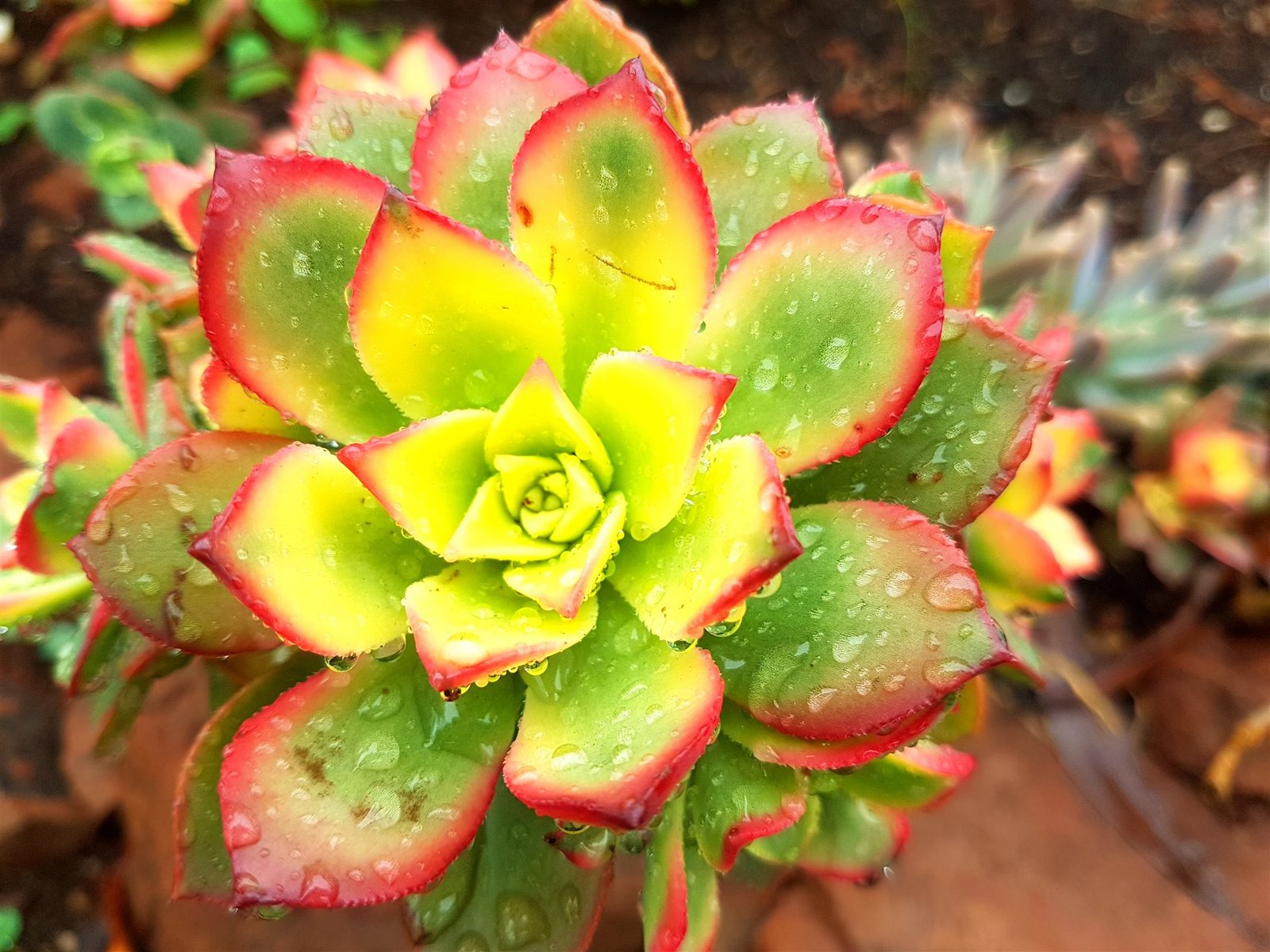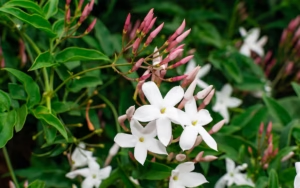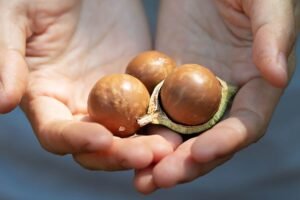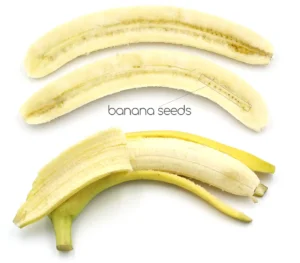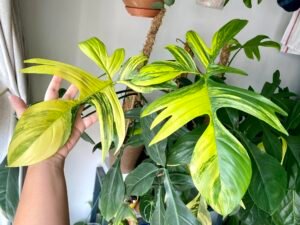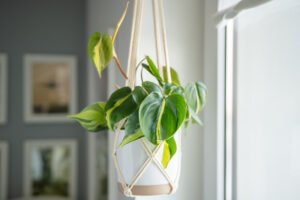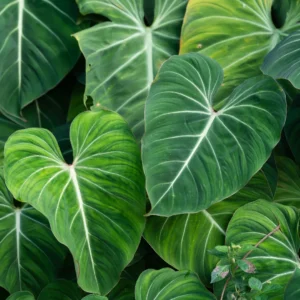Aeonium Kiwi is a beautiful and low-maintenance succulent that can add vibrant color and texture to any garden or indoor plant collection. With its rosettes of green, yellow, and pink, this plant is a showstopper. Whether you’re a seasoned gardener or a beginner, this guide will provide everything you need to know about planting, growing, and caring for Aeonium Kiwi.
Quick Facts About Aeonium Kiwi
| Common Name | Aeonium Kiwi (Tricolor Aeonium) |
|---|---|
| Botanical Name | Aeonium decorum ‘Kiwi’ |
| Family | Crassulaceae |
| Plant Type | Succulent, perennial |
| Mature Size | 1-2 feet tall and wide |
| Sun Exposure | Full sun to partial shade |
| Soil Type | Well-draining, sandy or loamy soil |
| Soil pH | Neutral to slightly acidic (6.0-7.0) |
| Hardiness Zones | 9-11 (USDA) |
| Native Area | Canary Islands, North Africa |
| Toxicity | Non-toxic to humans and pets |
What Is Aeonium Kiwi Used For?
Aeonium Kiwi is a versatile plant that is not only beautiful but also practical. Here are some of the main uses of this vibrant succulent:
- Ornamental Planting: Aeonium Kiwi is a popular choice for gardens, rockeries, and indoor containers due to its colorful and eye-catching rosettes. It can be planted as a focal point or as part of a succulent arrangement.
- Drought-Tolerant Landscaping: Since Aeonium Kiwi requires very little water, it is perfect for xeriscaping, which focuses on reducing water usage in landscaping.
- Indoor Decor: With its small size and unique appearance, Aeonium Kiwi makes a great indoor houseplant. It thrives in bright spaces and adds a splash of color to any room.
- Gifting: Aeonium Kiwi is an excellent gift for plant enthusiasts. It is easy to care for and ideal for both beginners and experts.
Aeonium Kiwi Care
Aeonium Kiwi is relatively easy to care for, provided it gets the right environment. Follow these guidelines to ensure your Aeonium Kiwi thrives:
1. Light Requirements
Aeonium Kiwi prefers bright, indirect light. When grown outdoors, it does best in full sun to partial shade. However, if the sun is too intense, it may cause leaf burn. Indoors, place your Aeonium Kiwi near a south- or west-facing window where it can receive plenty of light.
Tips:
- Gradually introduce the plant to full sun to avoid sunburn.
- If the plant appears stretched or elongated, it may not be getting enough light.
2. Soil
Aeonium Kiwi requires well-draining soil to prevent root rot. Use a sandy or loamy soil mix that drains quickly. You can also mix cactus or succulent soil with perlite or sand to improve drainage.
3. Watering
While Aeonium Kiwi is drought-tolerant, it still needs regular watering during its growing season (spring and fall). Water deeply but allow the soil to dry out between waterings. Reduce watering in the winter, as the plant enters dormancy.
Watering Tips:
- Avoid overwatering, as this is the most common cause of root rot.
- Water at the base of the plant to keep the leaves dry.
4. Temperature and Humidity
Aeonium Kiwi thrives in warm temperatures and grows best in USDA hardiness zones 9-11. It prefers temperatures between 65°F to 75°F (18°C to 24°C). This plant does not tolerate frost, so bring it indoors if temperatures drop below 40°F (4°C).
5. Fertilizer
Feed your Aeonium Kiwi with a balanced, diluted fertilizer once a month during the growing season (spring and fall). Avoid fertilizing during the winter dormancy period.
Tip: Use a succulent-specific fertilizer to promote healthy growth.
6. Pruning
Prune your Aeonium Kiwi as needed to remove dead or damaged leaves. This not only improves its appearance but also encourages healthy growth.
Types of Aeonium Kiwi
Although Aeonium Kiwi is a distinct cultivar, it belongs to the larger Aeonium genus, which includes many other beautiful and unique species. Here are a few notable varieties of Aeonium:
- Aeonium Arboreum: Known for its tall stems and green rosettes, this variety can grow up to 3 feet tall.
- Aeonium Zwartkop: Also called the “Black Rose,” it features dark purple-black leaves that contrast beautifully with other succulents.
- Aeonium Sunburst: A stunning variety with large rosettes that display green, yellow, and pink hues.
- Aeonium Undulatum: This variety has glossy, wavy-edged leaves and grows in a single stem.
Each of these varieties has similar care requirements to Aeonium Kiwi, making them great companion plants.
Propagating Aeonium Kiwi
Aeonium Kiwi can be easily propagated through stem cuttings, making it simple to grow new plants. Here’s how to propagate Aeonium Kiwi step by step:
1. Take a Cutting
- Use a clean, sharp knife or scissors to cut a healthy stem with a rosette.
- Leave a few inches of the stem intact to make it easier to plant.
2. Let It Callous Over
- Place the cutting in a dry, shaded area for 2-3 days to allow the cut end to callous. This step helps prevent rot when planting.
3. Plant the Cutting
- Once the end is dry, plant the stem in well-draining soil. Bury the stem about an inch deep for stability.
- Avoid watering immediately; wait a few days to allow the roots to start developing.
4. Care for the New Plant
- Place the cutting in a bright spot with indirect light.
- Water lightly when the soil feels dry.
- Roots will typically develop within 2-4 weeks.
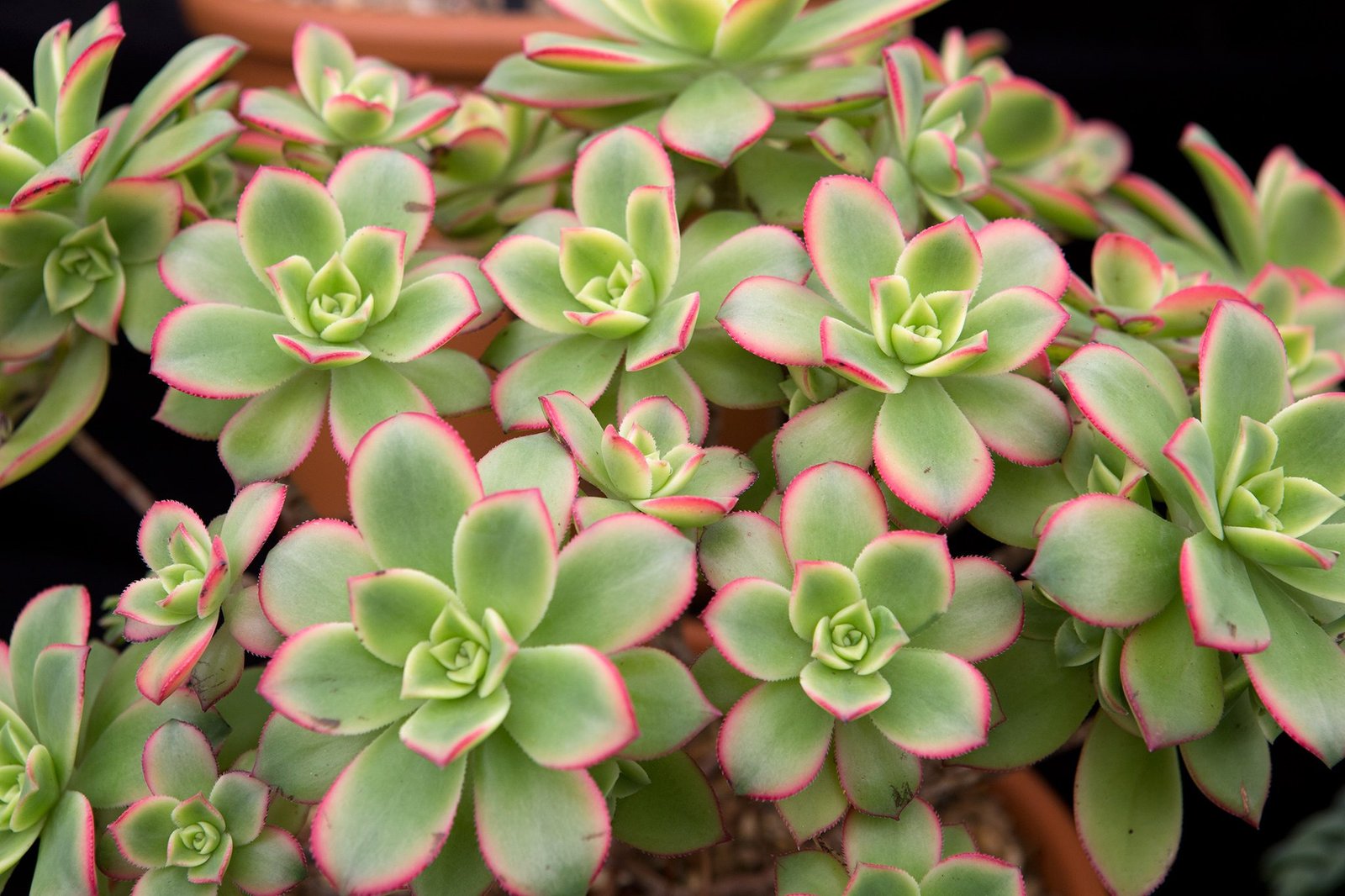
How to Grow Aeonium Kiwi From Seed
Growing Aeonium Kiwi from seed is a slower process compared to propagation, but it can be rewarding. Here’s how to do it:
1. Collect or Purchase Seeds
- Purchase high-quality Aeonium Kiwi seeds from a reputable supplier.
2. Prepare the Soil
- Use a shallow tray filled with a well-draining soil mix, such as cactus soil mixed with sand.
3. Sow the Seeds
- Scatter the seeds evenly over the soil.
- Lightly cover the seeds with a thin layer of soil.
4. Water and Cover
- Mist the soil lightly to keep it moist (not soggy).
- Cover the tray with clear plastic to retain humidity.
5. Provide Light and Warmth
- Place the tray in a warm, bright location. Maintain temperatures between 65°F and 75°F.
6. Germination
- Seeds may take 2-3 weeks to germinate. Once the seedlings appear, remove the plastic cover and allow them to grow.
- Transplant the seedlings into individual pots once they are strong enough.
Potting and Transplanting Aeonium Kiwi
Aeonium Kiwi grows well in containers, which makes it easy to move and care for. Follow these steps for potting and transplanting:
- Choose the Right Pot: Use a pot with drainage holes to prevent excess water from collecting.
- Prepare the Soil: Fill the pot with well-draining succulent soil.
- Plant the Aeonium: Place the Aeonium Kiwi in the center of the pot and fill in the gaps with soil.
- Water Sparingly: Water lightly after planting and let the soil dry out between waterings.
Overwintering Aeonium Kiwi
Aeonium Kiwi is sensitive to cold temperatures and needs special care in winter:
- If grown outdoors, bring it inside when temperatures drop below 40°F.
- Place the plant in a bright, cool area with good airflow.
- Reduce watering during dormancy, as the plant needs less moisture in winter.
Common Pests
Aeonium Kiwi is relatively pest-resistant, but it can sometimes attract the following pests:
- Mealybugs: These small, cotton-like insects feed on plant sap and weaken the plant. To treat, wipe them off with a cotton swab dipped in alcohol or use insecticidal soap.
- Aphids: Aphids can cluster on new growth and suck sap from the leaves. Rinse them off with water or apply neem oil for control.
- Spider Mites: These tiny pests leave fine webs on the plant and can cause discoloration. Spray the plant with water or use horticultural oil to eliminate them.
Regularly inspect your Aeonium Kiwi for pests, especially during warm seasons.
How to Get Aeonium Kiwi to Bloom
Aeonium Kiwi produces small, yellow star-shaped flowers during its growing season. However, it requires specific conditions to bloom:
- Provide Adequate Sunlight: Ensure the plant gets 4-6 hours of bright, indirect sunlight daily.
- Proper Watering: Maintain a consistent watering schedule without overwatering.
- Fertilize: Feed the plant during spring and fall to encourage blooms.
- Avoid Stress: Avoid sudden changes in light, temperature, or watering, as stress can prevent flowering.
Keep in mind that Aeonium Kiwi is monocarpic, meaning it will die after flowering. However, the plant often produces offsets (pups) before blooming, which can continue growing.
Common Problems With Aeonium Kiwi
Although Aeonium Kiwi is easy to care for, it can face some common problems:
- Overwatering: Overwatering leads to root rot, which is the most common issue. Always let the soil dry out between waterings.
- Sunburn: Intense, direct sunlight can scorch the leaves, causing brown spots. Gradually acclimate the plant to full sun.
- Leggy Growth: Insufficient light can cause the plant to stretch and lose its compact shape. Move it to a brighter location.
- Pests: Mealybugs, aphids, and spider mites can damage the plant if not treated promptly.
By identifying and addressing these problems early, your Aeonium Kiwi can stay healthy and vibrant.
FAQ
1. Is Aeonium Kiwi toxic to pets?
No, Aeonium Kiwi is non-toxic to humans and pets, making it a safe choice for households with animals.
2. How often should I water Aeonium Kiwi?
Water your Aeonium Kiwi deeply but allow the soil to dry out completely between waterings. Typically, once every 1-2 weeks works well during the growing season.
3. Can Aeonium Kiwi survive cold temperatures?
Aeonium Kiwi is not frost-tolerant. If temperatures drop below 40°F (4°C), bring the plant indoors or protect it from the cold.
4. How do I make Aeonium Kiwi grow faster?
Provide bright, indirect light, use well-draining soil, and fertilize lightly during the growing season. Avoid overwatering and extreme temperatures.
5. Why is my Aeonium Kiwi turning brown?
Browning can occur due to sunburn, overwatering, or pest infestations. Assess the plant’s light, watering habits, and inspect for pests to resolve the issue.
Read also: How to Grow and Care for Rubber Plant

